Erich Schwaninger ist weit über die Schaffhauser Kantonsgrenzen bekannt für sein Pflugmuseum und die Schmiedehammer Ausstellung. Neuerdings macht er auch Kunstgegenstände aus Bronze.




AUSSTELLUNG
Die Menge an Material an der "SHKunst" ist unüberblickbar. Deshalb haben wir Jury gespielt: Hier sind die fünf sehenswertesten Kojen.
Darunter Koje 58: Metallmänner gesammelt von Erich Schwaninger
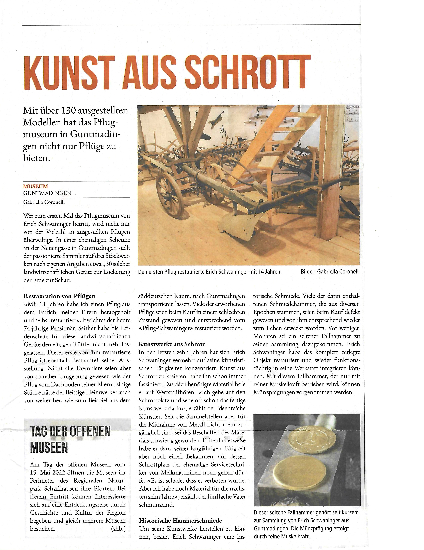
Mit über 130 ausgestellten Modellen hat das Pflugmuseum in Guntmadingen nicht nur Pflüge zu bieten.
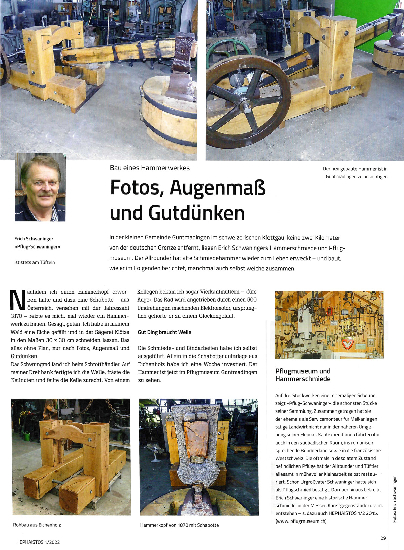
Jubiläumsausgabe, Januar 2022, Hephaistos

Dieses Mal sind wir mit „Urlaub bei uns” am Rande der Schweiz unterwegs: In
Schaffhausen sind im Museum zu Allerheiligen archäologische Funde zu bestaunen. In
Guntmadingen zeigt ein Sammler besondere Schätze: Schmiedehämmer und
entsprechendes Werkzeug.
Den ganzen Bericht finden Sie im angehängten PDF Dokument.
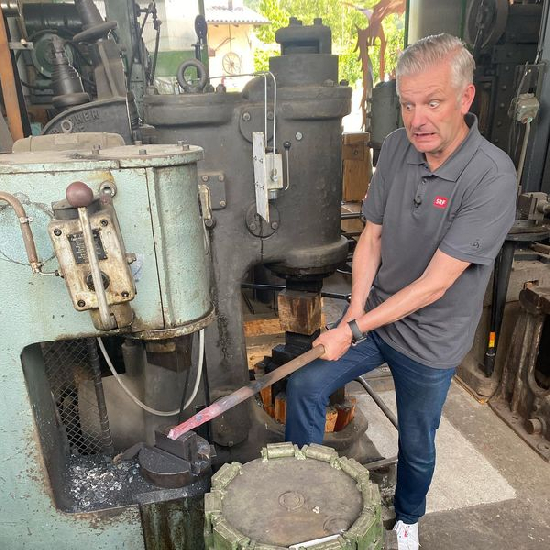
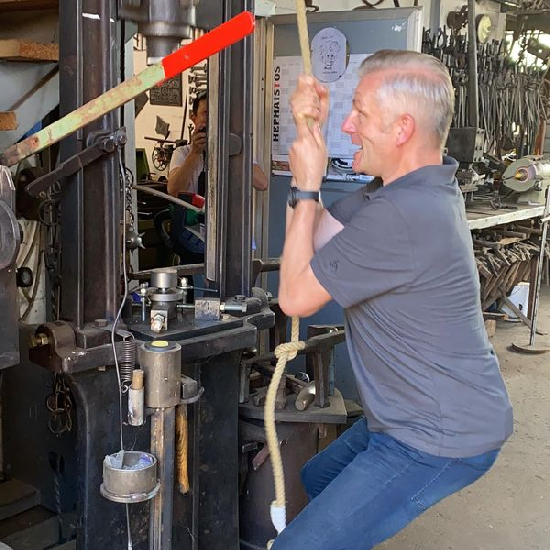
Superspannender Drehtag in Guntmadingen im Kanton Schaffhausen.
Auf Besuch bei Erich Schwaninger im Pflugmuseum.
Viel erlebt in der Hammerschmiede!!!
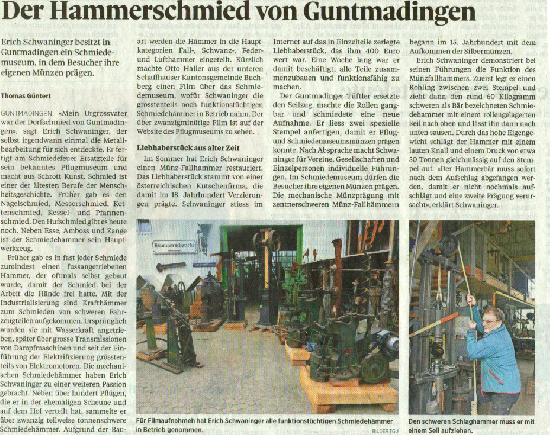
Erich Schwaninger besitzt in Guntmadingen ein Schmiedemuseum, in dem Besucher ihre eigene Münzen prägen.
...

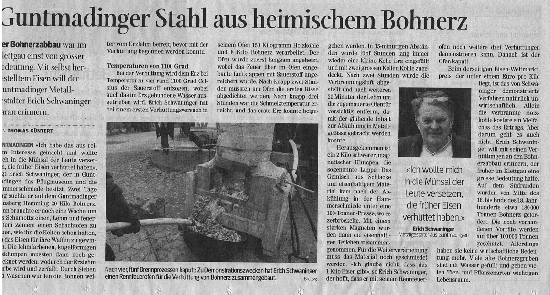
Der Bohnerzabbau war im Klettgau einst von grosser Bedeutung.
...

Im Rahmen der grenzüberschreitenden Museumsnacht Hegaus-Schaffhausen wurde...

"Erich Schwaninger ist Sachverständiger für Pflüge, Luftschmiedehämmer und andere spannende Sachen..."
im angehängten PDF können Sie den ganzen Bericht lesen.
Veröffentlicht im Hephaistos (Internationale Zeitschrift für Metallgestalter)
The first ploughs in the form of sticks and hooks to scrape furrows in the earth were found in the Neolithic ages. In spite of the fact that there are documents found in Rätien about a wheeled plough that was pulled by animals, that go back as far as the first century before Christ, and that a “carrucca”, a wheeled plough is mentioned in the alemannic collection of rights from the 8th century, simple “plough hooks” must have mostly been used.
Ploughing techniques were greatly improved during the early phases of the Middle Ages. During Feudalism (1100- 1300) not only the heavy, clod-turning conventional one-way plough with mould board (earthboard) and forecarriage was used, it was also the start of using iron for parts suffering from heavy use ( -> coulter). Instead of simple hooks that could only scratch at the earth, one could now dig deeper and the earth could be loosened and turned. One disadvantage of the one way plough was the unmovable earthboard, which turned the furrows onto one side only. The empty trips involved in this method stopped in the late 15th century, with the invention of a ->reversible plough. In large areas of the hilly region in the “Mittelland” of Switzerland this plough was widely used; in the mountains the use of the simple hooks continued.
During the general rise of agriculture in the second half of the 18th century (distribution of common land, sowing of fallow land, using fertiliser), the scientific interest in the land plough increased and useful reforms were awarded.
Since the 1820’s ploughs from abroad were also tested and compared with home products. For decades bitter fights about difference of opinion were fought between supporters of the new and more efficient BEETPFLÜGE from England, Belgium, France and Germany and supporters of the local KEHRPFLÜGE. This question was answered in the 1880’s when – with strong participation of bernese plough smiths – the GANZEISERNE SELBSTHALTER- ODER ZWILLINGSPFLUG came on the market. This plough combined the advantages of the BEET- and the KEHRPFLUG and asserted itself against the older systems that were often still made of wood.
Steamdriven ploughs (not relevant for Switzerland), motorised ploughs that were invented after the first World War and the ploughs constructed for use with tractors are not mentioned in this brochure.
Visit the unique collection
in the plow museum in Guntmadingen,
Reservation by telephone required.
Tel. +41 (0) 79 352 42 65